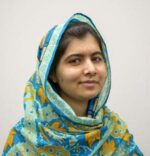How the media portrayed the Taliban’s attack on Malala
After the Taliban attempted to assassinate Malala Yousafzai, Pakistani newspapers used common language to describe the attack, which suggests the media has influence in changing social perceptions of the group, according to research published in the Pertanika Journal of Social Sciences and Humanities (JSSH). Malala Yousafzai is a Pakistani activist for female education and the youngest person to receive a Nobel Prize. She started writing a blog for BBC Urdu in 2009 and subsequently reported for other media about her life in the Swat valley under the Taliban, which banned girls from attending local schools. On 9 October 2012, she was attacked on a school bus by the extremist group, but survived. The incident received national and international media coverage despite Talibani threats. In a JSSH study, Noor Hayat and Juliana Abdul Wahab of Universiti Sains Malaysia analysed four leading Pakistani English language newspapers to determine how Malala Yousafzai and theTaliban were portrayed after the attack. In their analysis, the researchers used the “media framing theory”, which in this study refers to the act of selecting certain aspects of a perceived reality and making them easier to communicate to highlight an issue, definition and/or solution of a topic. The researchers chose 29 editorials containing the word “Malala” that were published in the online editions of The News, Dawn, Daily Times and The Nation, between 10 October and 10 November 2012. These papers are considered more credible and influential to policy makers than those reporting in local languages. The team found that the editorials generally portrayed Malala positively: 58% referred to her as an “innocent girl” who stood up for girls’ education, 25.3% called her “courageous” and 17.4% used the term “activist”; in particular, The Nation and Daily Times praised Malala’s bravery more than the other two papers. By comparison, the […]

